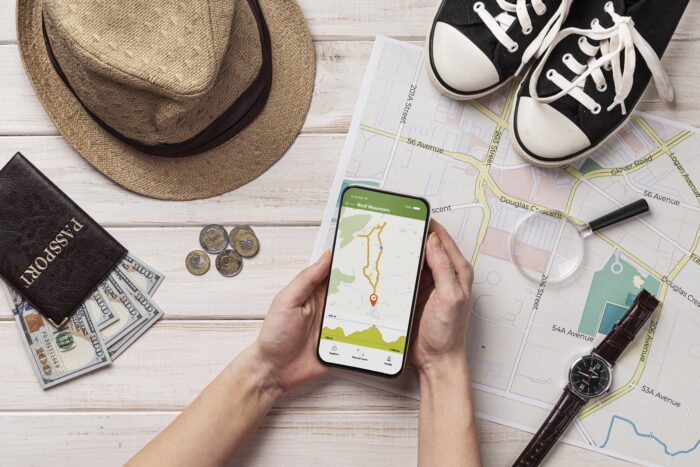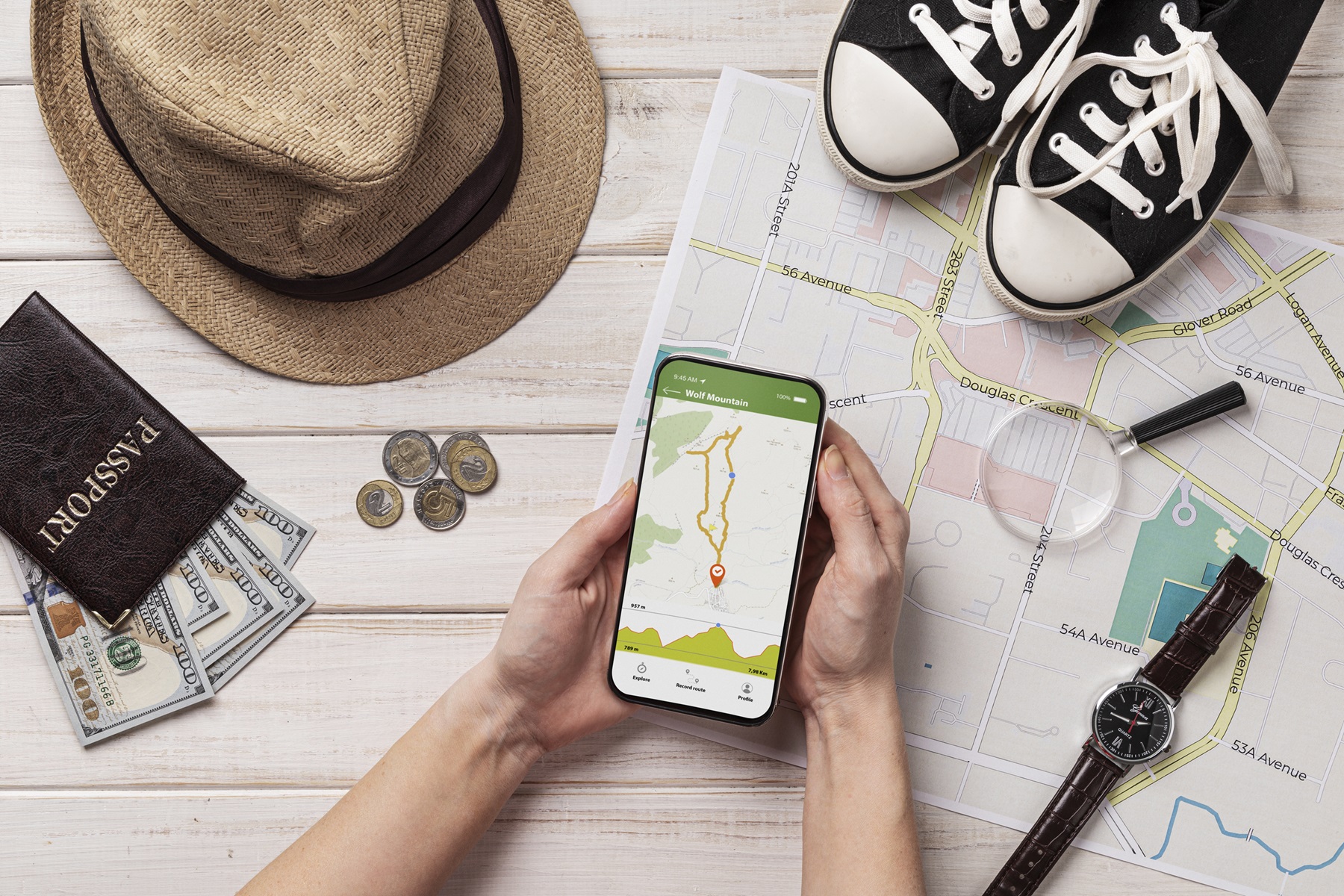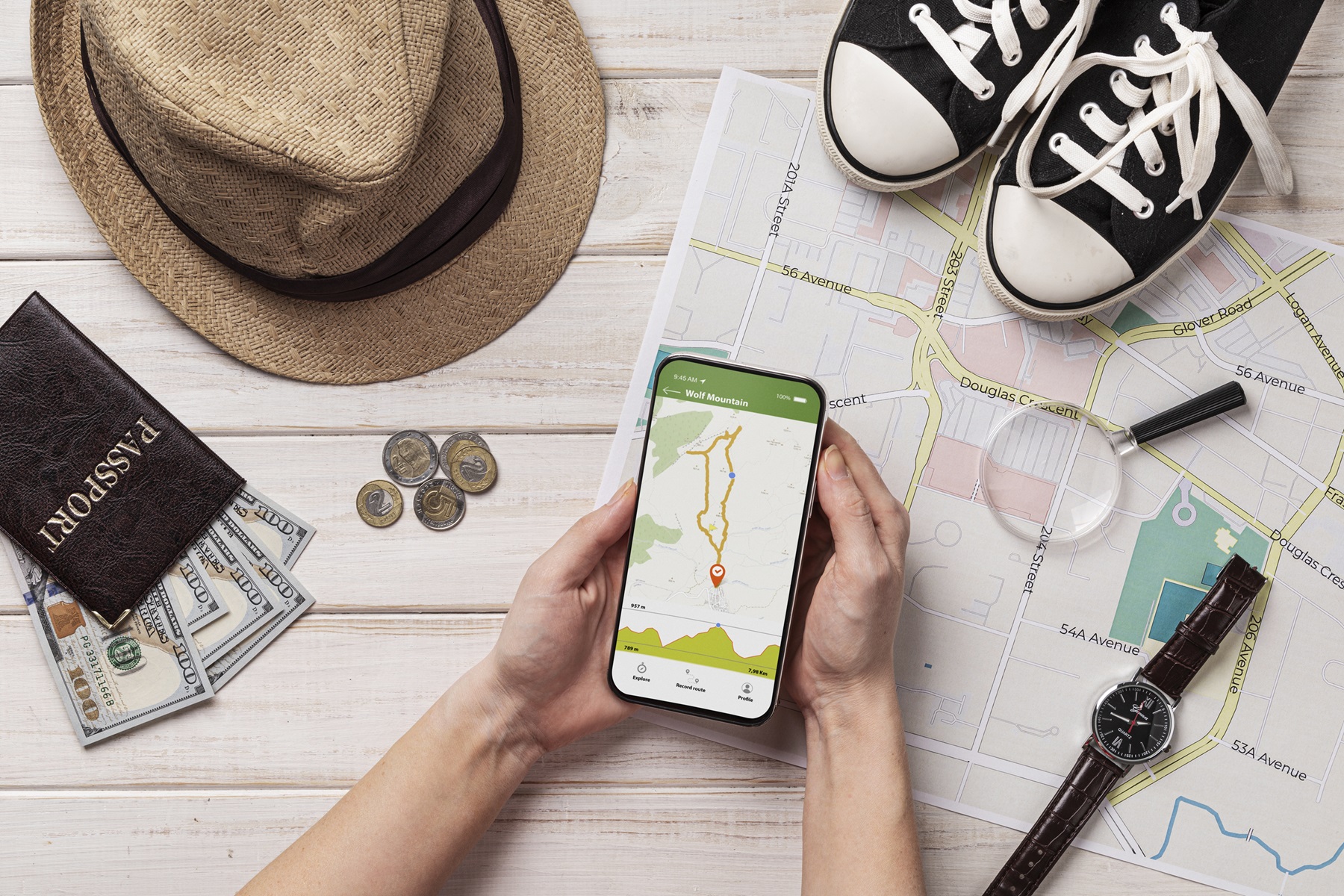
Hong Kong, Hong Kong SAR, November 29, 2024 / TRAVELINDEX / Smartphones are playing an increasingly important role in travellers’ in-destination decision-making. This trend is delineated in an important recent study led by Dr Dan Wang of the School of Hotel and Tourism Management (SHTM) at The Hong Kong Polytechnic University. Adopting the powerful theoretical lens of “sociomateriality”, the researchers offer insights into the ways in which tourists interact with their Internet-enabled devices while making travel decisions – such as where to visit and what to buy – in real time. Their findings point to rich opportunities for tourism businesses to influence tourists’ spending decisions in the age of the smartphone.
Technology is influencing not only where and how often we travel, but also how we behave when we reach our destination. In particular, the rise of smartphones has ushered in an era of unprecedentedly dynamic and impulsive decision-making by tourists. It seems that the fixed holiday itinerary is becoming a thing of the past. “People increasingly postpone their decisions until after arrival”, say the authors, “as more contextual information and ubiquitous Internet access via smartphones improve decisions”.
For researchers, the travel context provides a wealth of opportunities to study technology-mediated decision-making. Although a holiday destination itself is usually pre-planned and fixed, and we may have a rough idea of the sites we most want to visit, we are free to make many choices “on the go”. Even when visitors do arrive with a schedule in mind, they often depart from it. This leads to “substantial disparities between travel plans and actual behaviours related to various travel components”, as the researchers put it. With a smartphone full of apps, it has never been easier to be spontaneous on vacation.
The information technology revolution in holidaymaking has certainly not gone unnoticed by academics. The hospitality and tourism industry needs to keep pace with these changes and understand how the ubiquity of mobile Internet is reshaping visitors’ behavioural choices. However, despite the burgeoning research interest in the impact of smartphones and apps on tourism, many studies have only been quantitative. “Experiential accounts of in-destination decision-making by tourists remain quite limited”, the authors note. Exactly how and why holidaymakers choose their activities in the mobile Internet era is thus ripe for investigation.
Holidaying is often a social activity, and group travellers’ decisions are collaborative. Smartphone technology has not only revolutionised how individuals access information but also influenced the workings of a typical social group. The literature is rich in technical studies that focus on how people employ smartphones to complete specific tasks. “In these studies”, warn the researchers, “smartphones and apps have been perceived only as tools”. Wang’s team saw the need for more research into how such devices affect the relational dynamics of tourist groups.
To fill this gap, the researchers drew on a concept from the information studies literature. “The increasingly recognized sociomateriality approach”, they explain, “has been developed to frame research questions regarding technology through a sociotechnical lens and analyse technology in tourism and hospitality contexts”. Developed as a more sophisticated alternative to a simple technological perspective, the sociomateriality view of technology enables researchers to explore how the social and material worlds influence and even constitute each other.
As powerful, pocket-sized computers that mediate our social and professional activities in numerous ways, smartphones have certainly become a constitutive part of our lives. While access to mobile data in foreign locations was once hard to come by, today it is routine to use apps to explore our environment wherever we are. Thus, to push the field forward, Wang’s study “shifted the focus to the sociomateriality of smartphones in travel, which consists of the entanglements of smartphone functions with social actions during a trip”.
To explore actual tourists’ smartphone use for decision-making, the researchers performed a real-world experimental study. This involved making contact with a set of participants who were holidaying in groups of two to five in a far-flung set of locations in Asia, Europe, North America and Oceania. All of the informants were regular smartphone users, and throughout their holidays they remained in close contact with the research team, who sent messages roughly every 4 hours to discuss their experiences, particularly their travel decisions.
To ensure that the information obtained from the participants was not only rich and accurate but also relevant to sociomateriality, the team designed their research as a process-tracking study. Using questions designed to “capture the sociomateriality of smartphones in tourist group decision-making and its performativity during trips”, they explored in depth the patterns of group behaviour as the groups used their devices for information searching, wayfinding, making payments, communication and more. This led to a deep contextual understanding of the participants’ smartphone-informed choices.
From 97 scenarios of group decision-making involving smartphones, the researchers identified “three patterns of group decision-making and four features of smartphone sociomateriality related to decisions regarding activities, meals, and shopping in travel”. The “three patterns” pertained to the participants’ social dynamics as they planned their itineraries. The “four features”, namely knowledgeability, thriftiness, referenceability, and negotiability, referred to the categories of information that the participants acquired from their smartphones to drive the dynamic decision-making process.
The first group decision-making pattern was defined as “Dominance of the Active Smartphone User”. This pattern involved the searching and filtering of information by a single smartphone user. The rest of the group then accepted the dominant user’s suggestions, instead of using their own devices to provide alternative information. For example, one group’s decision to visit some top attractions in Prague was dominated by a single member using their smartphone to search for information (the knowledgeability feature). In another case, tourists in Cambodia opted for a show after one discovered they could buy cheaper tickets online (thriftiness).
“Complexity from Multiple Active Smartphone Users” characterised the second pattern. Here, two or more group members were involved in decision-making, and there was more negotiation and discussion. This pattern mostly occurred when there was little time pressure. “Smartphones tended to shape this type of group decision-making through knowledgeability and negotiability”, the researchers explain. Group members each searched for information, and more persuasive cases were generally accepted. In Thailand, for example, multiple group members used their devices to search for restaurants, and the group opted for places with good reviews across different sets of search results.
The third pattern was “Decapsulated Decision-Making”, whereby smartphones were used to open up group decision-making beyond the group itself. That is, travellers used their devices to obtain real-time advice from other social contacts who were not part of the holiday – thus “decapsulating” the decision. Two visitors to Las Vegas, for example, were influenced in their shopping decisions by the mother of one participant, who chatted with them as they shopped.
Wang and team’s findings go beyond the technical details of usage and elucidate the social aspects of tourists’ deployment of smartphones. The finding that “the relationship between smartphones and tourists was more profound than the adoption of some mobile apps for navigation, information search, reservation payments, and other functions” opens up the possibility of smartphones having their own “technology agency”. Meanwhile, the researchers recommend that tourism businesses pay greater attention to contextual and location-based marketing in the age of abundant data and on-the-go decision-making.
Wang, Dan, Tussyadiah, Iis, and Zhang, Elaine. (2023). Shaping In-Destination Group Decision-Making: The Sociomateriality of Smartphones. Journal of Travel Research, Vol. 63, No. 3, 625-641.
Source


 Hong Kong, Hong Kong SAR, November 29, 2024 / TRAVELINDEX / Smartphones are playing an increasingly important role in travellers’ in-destination decision-making. This trend is delineated in an important recent study led by Dr Dan Wang of the School of Hotel and Tourism Management (SHTM) at The Hong Kong Polytechnic University. Adopting the powerful theoretical lens of “sociomateriality”, the researchers offer insights into the ways in which tourists interact with their Internet-enabled devices while making travel decisions – such as where to visit and what to buy – in real time. Their findings point to rich opportunities for tourism businesses to influence tourists’ spending decisions in the age of the smartphone.
Hong Kong, Hong Kong SAR, November 29, 2024 / TRAVELINDEX / Smartphones are playing an increasingly important role in travellers’ in-destination decision-making. This trend is delineated in an important recent study led by Dr Dan Wang of the School of Hotel and Tourism Management (SHTM) at The Hong Kong Polytechnic University. Adopting the powerful theoretical lens of “sociomateriality”, the researchers offer insights into the ways in which tourists interact with their Internet-enabled devices while making travel decisions – such as where to visit and what to buy – in real time. Their findings point to rich opportunities for tourism businesses to influence tourists’ spending decisions in the age of the smartphone.